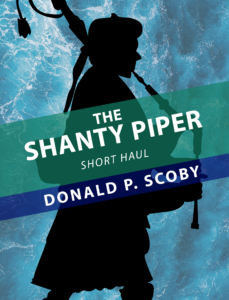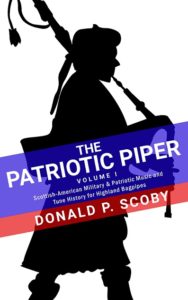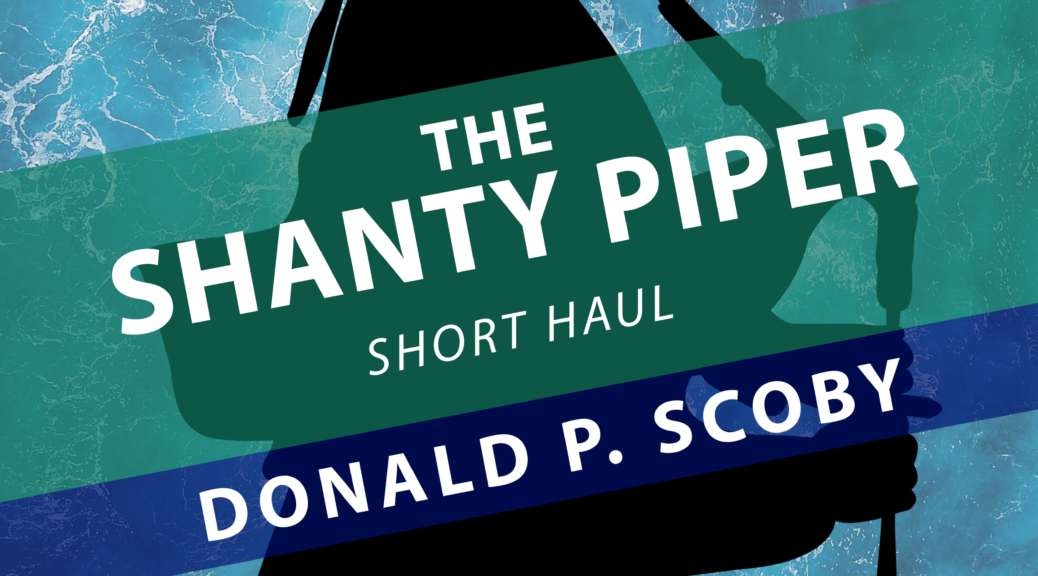 As a rule, I keep my creative ideas close to my waistcoat (or in American terms “vest”). Why? Well . . . because they’re mine . . . and I of course want to keep other people from making them real before I do. This includes my EXTREMELY SOON TO FINALLY PUBLISH NEXT BOOK . . . The Shanty Piper!!!
As a rule, I keep my creative ideas close to my waistcoat (or in American terms “vest”). Why? Well . . . because they’re mine . . . and I of course want to keep other people from making them real before I do. This includes my EXTREMELY SOON TO FINALLY PUBLISH NEXT BOOK . . . The Shanty Piper!!!
Please understand something — THIS MAY BE THE FIRST BOOK OF ITS KIND! So far as I’m aware, past or present, there has never been a book of sea shanty music arranged for Scottish bagpipes. I believe mine will be the first! The Shanty Piper
So why am I sharing this now? Because a pre-order listing is already posted on The Pipe’s Hut website. Because my book is finally mere days away from publishing. Could someone else grab this idea and quickly throw a same-concept book together, and claim theirs as first? SURE! But — I don’t think they’re going to, they’d have to do a chunk of work even to create the most basic publication, and mine should be publishing so soon I don’t think they’ll beat me. Besides, most Scottish bagpipers wouldn’t dare do something this creative or out of line with the underlying proclamation of the purist pipers. That said — if all goes smoothly — I’m forecasting hitting the big ol’ PUBLISH button around the middle to late this week. Yeah, The Shanty Piper is that close!
So what’s all this Shanty Piper
“finally publish” stuff?!?
About four years ago I attended my first sea shanty concert — I’d never heard this music or seen it performed before. I was aware of songs like What Do You Do With a Drunken Sailor, Blow The Man Down, Donkey Riding, South Australia, and We’ll Rant And We’ll Roar . . . but I didn’t really know what they where or where they came from. During the concert, I started to wonder — “Could these tunes fit on Scottish bagpipes???” The Shanty Piper
 During the following days, I explored this idea. I researched shanties, looked up lyrics, made the personal discovery of related YouTube videos, and found notation online to experiment with transposing and arranging for my instrument. This soon developed into the idea of making a sea shanty book — which only whetted my appetite further. But this was also a distraction — I was involved in finishing The Patriotic Piper Vol. 01 — so what would ultimately become The Shanty Piper had to be put on hold.
During the following days, I explored this idea. I researched shanties, looked up lyrics, made the personal discovery of related YouTube videos, and found notation online to experiment with transposing and arranging for my instrument. This soon developed into the idea of making a sea shanty book — which only whetted my appetite further. But this was also a distraction — I was involved in finishing The Patriotic Piper Vol. 01 — so what would ultimately become The Shanty Piper had to be put on hold.
About two years ago — with his confidence to keep it confidential — I shared my sea shanty sheet music book idea with Jon Maffett, owner of The Piper’s Hut online bagpipe supply shop. After this, I resumed working on my shanty book — but due to my focus on another book project, my maritime music endeavour had to be relegated to being a backburner activity. The Shanty Piper
Speaking again with Jon about a year and a half ago, he asked ‘when that folk work-song music book’ was going to be ready. This caught me off guard — I was surprised that he remembered my idea, and I was frankly flattered! This got me back to work, and I started to call it The Shanty Piper. There was the book I had envisioned and started writing, and yet it was clear to me that if I was going to get this idea out — and be the first — I’d need to produce a streamlined version of the concept.

The Shanty Piper was starting to take form during the middle of 2024. My aim was to publish during September. That was my plan, and then there’s reality. The project and my personal life were substantially visited by Mr. Murphy of Murphy’s Law Unlimited. This sort of thing is frustrating for any of us and any aspiration — I did my best to roll with the figurative punches. This was especially frustrating however because . . .
- This was designed to be a slimmed-down streamlined version of the project. So it should have been easy to complete, and not such a big deal in the face of Murphy’s Law, right? WRONG!
- As said, to my knowledge there is no other book past or present like this one on the market. It’s not often that anyone gets the chance to be the first with something like this. Every disruption and obstacle means that many more days someone else has to beat me to the goal.
What’s the September thing about?
And where’s this project now?
 In the book business, Christmas begins September 1st — and a lot of authors target their book releases in time for Xmas sales. I’ve been excited to get this on the market — I want folks to see it! I’m proud of the work, and I’m proud of every part of the book that other’s have contributed to. The cover looks outstanding, as you can see above. Uncommon for a bagpipe sheet music book, there’s tune history, theme relevant artwork inside, and song lyrics. Those things alone are unusual for Scottish bagpipe sheet music books, and my subject matter steps outside of the mainstream — but I gotta be me, and I had to produce this book!
In the book business, Christmas begins September 1st — and a lot of authors target their book releases in time for Xmas sales. I’ve been excited to get this on the market — I want folks to see it! I’m proud of the work, and I’m proud of every part of the book that other’s have contributed to. The cover looks outstanding, as you can see above. Uncommon for a bagpipe sheet music book, there’s tune history, theme relevant artwork inside, and song lyrics. Those things alone are unusual for Scottish bagpipe sheet music books, and my subject matter steps outside of the mainstream — but I gotta be me, and I had to produce this book!
So . . . TA-DAH — THERE YOU GO, WORLD — There’s the big reveal!
A Few Things To Be Clear About . . .
- I am not claiming to be the first at putting sea shanties on Scottish or any other kind of bagpipes — only that, as far as I know, no one else has published a book with a collection of sea shanties &/or maritime related arrangements for Scottish bagpipes.
- Historically, instruments were not utilized when shanties were being sung aboard ships. There simple wasn’t time or or manpower to spare. The inclusion of instruments with modern sea shanty singing and performing groups
(*often guitars, banjos, accordions, et cetera) - I started this project because I thought the music would fit on my instrument. Along the way, I learned that among the men who left home to work on these ships, a portion of them were from the British Isles. There are elements of sea shanty lyrics and the melodies behind the songs that clearly stem from Scot/Irish music, along with tunes and even songs that were reused within shanties.






 But don’t take my word for it,
But don’t take my word for it, 





